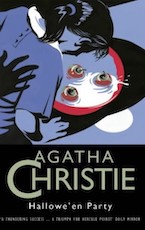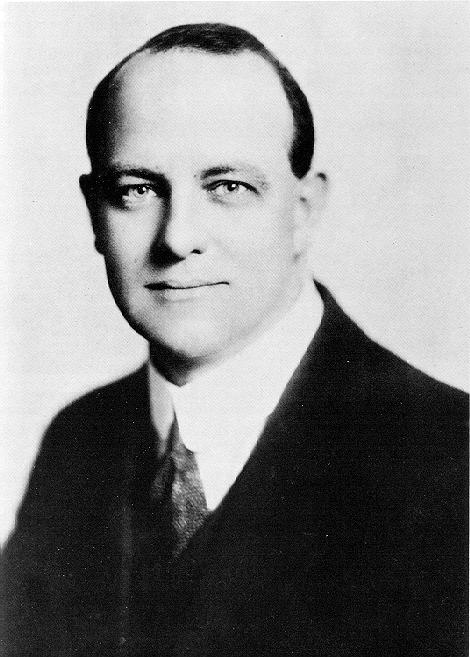
Poirot Score: 60
Hallowe’en Party
☆☆☆
Reasons for Poirot Score
A decent whodunnit that owes a lot to an earlier Christie novel. There are some clues but the solution is more involved than it need be, there are loose ends, a strange ending that is like a staged take-off of an ancient Greek tragedy, and Poirot is beginning to show his age.
Click here for full review (spoilers ahead)
Trivia
Dedication
To P.G.Wodehouse whose books and stories have brightened my life for many years. Also to show my pleasure in his having been kind enough to tell me that he enjoys my books.
Pelham (‘Plum’) Grenville Wodehouse (1881 – 1975) was as prolific a writer as Christie herself. He penned sentences such as: ‘The Right Hon. was a tubby little chap who looked as though he had been poured into his clothes and forgotten to say ‘When!’ (from Very Good, Jeeves).
Best known for the novels about Bertie Wooster and Jeeves he, like Christie, is often seen as too low brow to be considered a brilliant writer. Sean O’ Casey, the author of Juno and the Paycock, amongst many other plays, wrote in a letter to the Daily Telegraph in 1941: ‘The harm done to …England’s dignity .. is .. the .. acceptance of [P.G. Wodehouse] by the childish part of the people and the academic government of Oxford, dead from the chin up, as a person of any importance in English literature.’ The University of Oxford had awarded Wodehouse an honorary degree a couple of years earlier.
My favourite Wodehouse character is not Jeeves but the earlier creation, Psmith (the P is silent), who combines Wooster’s debonair insouciance with Jeeves’ intelligence. Wodehouse said of his writing that it was a ‘sort of musical comedy without music’. The analogy was not casual: Wodehouse knew about musical comedy. He wrote the lyrics for many of Jerome Kern’s songs, and had a number of hits on Broadway. His song Bill (‘Along came Bill ..’) written for Oh, Lady! Lady! (1917) was, with slight modification, reused by Kern and Hammerstein in Showboat (1927). Wodehouse also wrote plays. The Play’s the Thing was the title to his adaptation of a piece by Ferenc Molnár – the title referencing Hamlet’sMousetrap (‘the play’s the thing wherein I’ll catch the conscience of the King’) from which Christie took the title to her record-breaking play.
Christie and Wodehouse may have bonded over the uncertainties they faced as to how much US tax would be demanded of them as ‘non-resident alien authors’. Wodehouse’s case finally went to the American Supreme Court in 1948. In 1969, the year Hallowe’en Party was published, Wodehouse wrote to Christie: ‘I don’t find it spoils an Agatha Christie a bit knowing the end because the characters are so interesting’.

A Grasshopper Mark 7 car
The police were not able to trace the car that ran down your husband?’‘It was a Grasshopper Mark 7, I believe. Every third car you notice on the road is a Grasshopper Mark 7 – or was then.
Chapter 14
No such car existed but Christie may have been thinking back to the 1930s and to the Austin 7 Grasshopper.
The production of the Austin 7 began in 1922 and continued until 1939. It was Britain’s answer to the Model T Ford, though smaller. It proved very popular, with sales in the first year of 2500 and total sales of almost 300,000. It is still one of the vintage motor cars most commonly seen on British roads. It was the first mass produced car to use the position of pedals that has since become standard: clutch pedal on left, brake in the centre, and throttle on the right. The original engine was 696cc, four cylinder, with a three speed gearbox but over the years the engine was increased to 748cc with a four-speed manual gearbox.
In 1927 William Lyons, the co-founder of Swallow Sidecar Company, made his first car: an Austin 7 chassis with Swallow Sidecar coachwork. Lyons went on to make coachwork using other manufacturers’ chassis, and eventually made complete cars under the name Jaguar (see Trivia for Murder is Easy).
Austin cars were made all over the world (usually under licence). The first BMW – the Dixi – was essentially an Austin 7 and an early Nissan (the Datsun Type 11) was based on the Austin 7. The American Austin Company became American Bantam which created the first Jeep prototype.
The Austin 7 however was not simply a sedate family car. Lord Austin’s son-in-law, Arthur Waite, developed the car as a racer. It won the inaugural Australian Grand Prix in 1928. The first car owned by Bruce McLaren, the great driver who was sadly killed at the age of 32, was an Austin 7 ‘Ulster’. His experience restoring that car contributed to his founding the racing team that bears his name. Colin Chapman, the founder of Lotus cars, rebuilt an Austin 7 whilst still a student and drove it in various competitions.
The Austin 7 Grasshopper was a modification from the Austin 7 sports car known as ‘Speedy’. Only twelve ‘Grasshoppers’ were made. Some were built to compete at Le Mans, which they did in 1935 and 1937 (the 1936 race never took place because of industrial unrest in France). Seven of the twelve cars are still extant.
Christie’s ‘Grasshopper Mark 7’ was clearly popular, like the standard Austin 7. But Christie had perhaps been amused by a car bearing the name ‘Grasshopper’ and wanted to make use of it. The name, it is thought, referred to the movement of the car on first engaging the gears. Those of us who learnt to drive using a manual gearbox will remember the sudden leaps and jumps of the car before we developed sufficiently good clutch control.


